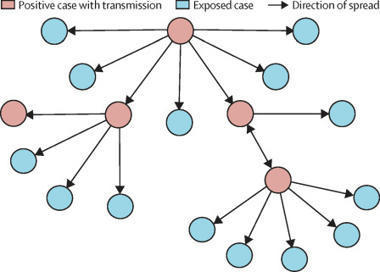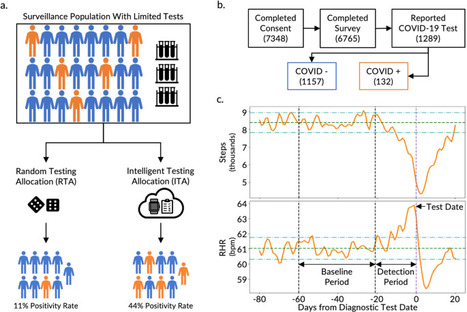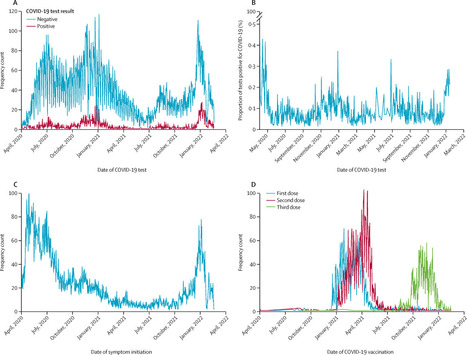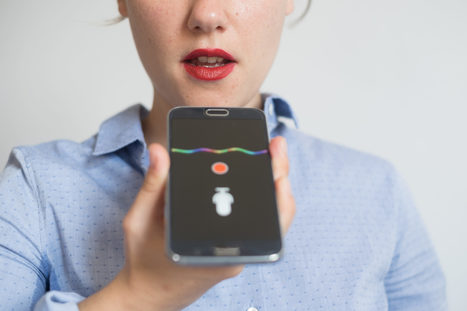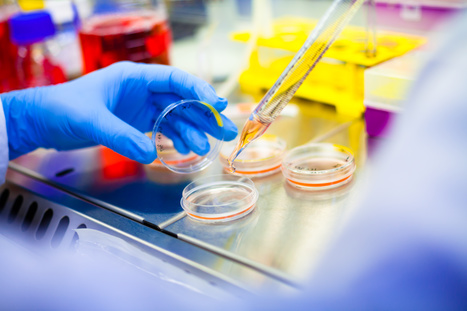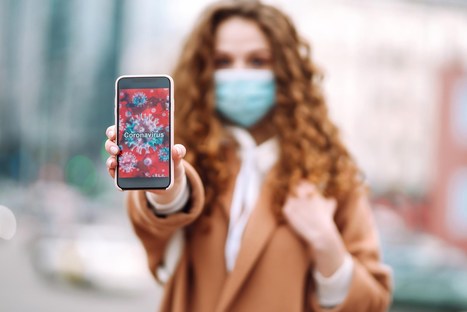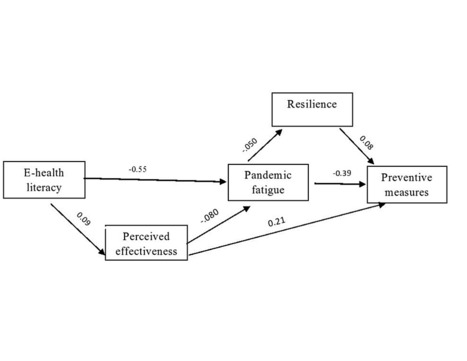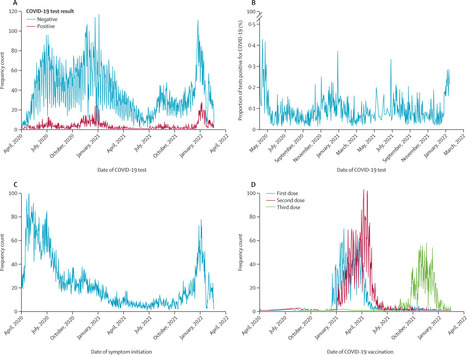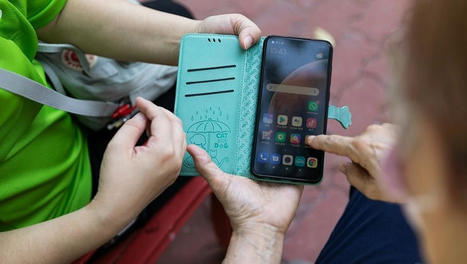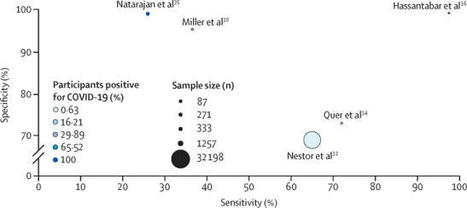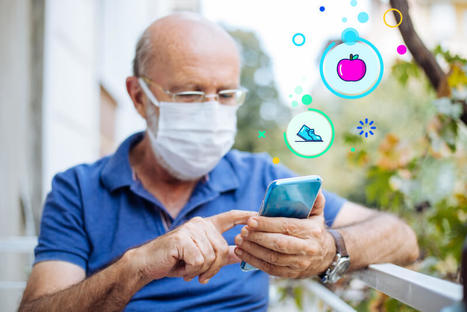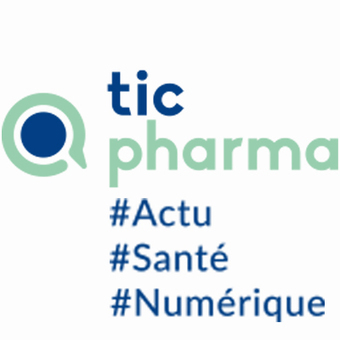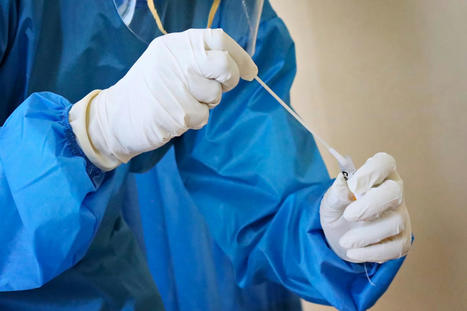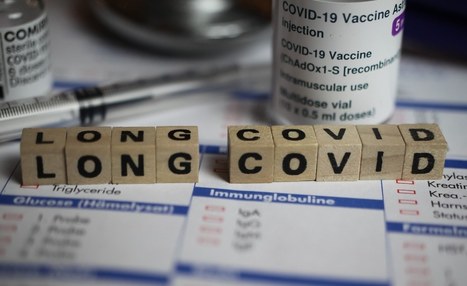 Your new post is loading...
 Your new post is loading...

|
Scooped by
Lionel Reichardt / le Pharmageek
October 31, 2022 9:27 AM
|
At the onset of the COVID-19 pandemic in early March, 2020, it became apparent that
non-electronic exposure investigations would not meet the demands required by the
mounting number of employees with COVID-19 in the Mount Sinai Health System in New
York City (NY, USA), a multicentre, academic medical institution and hospital system.
New York City was an epicentre early in the pandemic, resulting in a peak of more
than 6000 cases daily and more than 1000 deaths per day.1 Agile exposure investigation
and contact tracing were crucial to containing the spread of COVID-19 among hospital
staff. Lire l'article complet sur : www.thelancet.com

|
Scooped by
Lionel Reichardt / le Pharmageek
October 30, 2022 7:01 AM
|
Mass surveillance testing can help control outbreaks of infectious diseases such as COVID-19. However, diagnostic test shortages are prevalent globally and continue to occur in the US with the onset of new COVID-19 variants and emerging diseases like monkeypox, demonstrating an unprecedented need for improving our current methods for mass surveillance testing. By targeting surveillance testing toward individuals who are most likely to be infected and, thus, increasing the testing positivity rate (i.e., percent positive in the surveillance group), fewer tests are needed to capture the same number of positive cases. Here, we developed an Intelligent Testing Allocation (ITA) method by leveraging data from the CovIdentify study (6765 participants) and the MyPHD study (8580 participants), including smartwatch data from 1265 individuals of whom 126 tested positive for COVID-19. Our rigorous model and parameter search uncovered the optimal time periods and aggregate metrics for monitoring continuous digital biomarkers to increase the positivity rate of COVID-19 diagnostic testing. We found that resting heart rate (RHR) features distinguished between COVID-19-positive and -negative cases earlier in the course of the infection than steps features, as early as 10 and 5 days prior to the diagnostic test, respectively. We also found that including steps features increased the area under the receiver operating characteristic curve (AUC-ROC) by 7–11% when compared with RHR features alone, while including RHR features improved the AUC of the ITA model’s precision-recall curve (AUC-PR) by 38–50% when compared with steps features alone. The best AUC-ROC (0.73 ± 0.14 and 0.77 on the cross-validated training set and independent test set, respectively) and AUC-PR (0.55 ± 0.21 and 0.24) were achieved by using data from a single device type (Fitbit) with high-resolution (minute-level) data. Finally, we show that ITA generates up to a 6.5-fold increase in the positivity rate in the cross-validated training set and up to a 4.5-fold increase in the positivity rate in the independent test set, including both symptomatic and asymptomatic (up to 27%) individuals. Our findings suggest that, if deployed on a large scale and without needing self-reported symptoms, the ITA method could improve the allocation of diagnostic testing resources and reduce the burden of test shortages. Lire l'article complet sur : www.nature.com

|
Scooped by
Lionel Reichardt / le Pharmageek
October 30, 2022 7:00 AM
|
Our study showed that passively collected sensor data from consenting participants
can provide real-time disease tracking and forecasting. With a growing population
of wearable technology users, these sensor data could be integrated into viral surveillance
programmes. Lire l'article complet sur : www.thelancet.com
This phylogenetic tree represents the clade distribution of global SARS-CoV-2 viral genomes since the beginning of the pandemic. In the center is the reference Wuhan-1 strain, with outside samples now separated by nucleotide divergence. The last few months have led to an explosion of new variants with further mutations in the viral spike resulting in further antibody evasion, and also carrying changes in many other viral proteins. Some recently sequenced viral genomes from samples collected in Southeast Asia (not shown in this figure) display over a hundred nucleotides changes when compared to Wuhan-1. The graph was generated with nextstrain.org Lire l'article complet sur : www.linkedin.com
Via Juan Lama, Dr. Stefan Gruenwald

|
Scooped by
Lionel Reichardt / le Pharmageek
October 25, 2022 2:32 AM
|
Researchers in Luxembourg showed for the first time that vocal recordings of COVID-19 affected people could be used to monitor related symptoms of the disease. Lire l'article complet sur : www.researchluxembourg.org

|
Scooped by
Lionel Reichardt / le Pharmageek
October 16, 2022 3:33 AM
|
La préparation à une pandémie nécessite une « surveillance intelligente » pour contrer les stratégies virales plaide cette équipe de virologues de l’Université d'État de l'Ohio. Ces experts proposent, dans les Actes de l’Académie des Sciences américaine, des recommandations, intelligentes, pour améliorer notre réponse mondiale et globale contre de futures épidémies. Lire l'article complet sur : www.santelog.com

|
Scooped by
Lionel Reichardt / le Pharmageek
October 15, 2022 11:02 AM
|
Background: Patients with COVID-19 have increased sleep disturbances and decreased sleep quality during and after the infection. The current published literature focuses mainly on qualitative analyses based on surveys and subjective measurements rather than quantitative data.
Objective: In this paper, we assessed the long-term effects of COVID-19 through sleep patterns from continuous signals collected via wearable wristbands.
Methods: Patients with a history of COVID-19 were compared to a control arm of individuals who never had COVID-19. Baseline demographics were collected for each subject. Linear correlations among the mean duration of each sleep phase and the mean daily biometrics were performed. The average duration for each subject’s total sleep time and sleep phases per night was calculated and compared between the 2 groups.
Results: This study includes 122 patients with COVID-19 and 588 controls (N=710). Total sleep time was positively correlated with respiratory rate (RR) and oxygen saturation (SpO2). Increased awake sleep phase was correlated with increased heart rate, decreased RR, heart rate variability (HRV), and SpO2. Increased light sleep time was correlated with increased RR and SpO2 in the group with COVID-19. Deep sleep duration was correlated with decreased heart rate as well as increased RR and SpO2. When comparing different sleep phases, patients with long COVID-19 had decreased light sleep (244, SD 67 vs 258, SD 67; P=.003) and decreased deep sleep time (123, SD 66 vs 128, SD 58; P=.02).
Conclusions: Regardless of the demographic background and symptom levels, patients with a history of COVID-19 infection demonstrated altered sleep architecture when compared to matched controls. The sleep of patients with COVID-19 was characterized by decreased total sleep and deep sleep.
Lire l'article complet sur : www.jmir.org

|
Scooped by
Lionel Reichardt / le Pharmageek
October 5, 2022 1:00 PM
|
Pharma giant Pfizer has shelled out nearly US$120 million to acquire a small Australian company claiming to have developed a smartphone app that can accurately diagnose COVID-19 by analyzing the sound of a cough. Lire l'article complet sur : newatlas.com

|
Scooped by
Lionel Reichardt / le Pharmageek
October 1, 2022 6:11 AM
|
Introduction: There is emerging literature on the decline in adherence to preventive measures against the COVID-19 pandemic, a phenomenon of pandemic fatigue (PF). However, academics and policymakers have debated its existence and consequences. We conducted this study to explore this phenomenon, its existence, determinants, and relation to adherence to COVID-19 preventive measures, and the mediating role of resilience, fear of COVID-19, and electronic health literacy about COVID-19 in this relationship.
Methods: This cross-sectional online study was conducted from April to June 2021 using a convenience sample of 650 Saudi adults from all regions of Saudi Arabia using a reliable questionnaire. A structural equation model (SEM) was used for mediation analysis.
Results: The results revealed a moderate level of PF among Saudi adults. Younger patients experienced more PF. Fear of COVID-19 had a non-significant (p=0.127) effect on PF. SEM analysis revealed that both resilience and electronic health literacy significantly (p=0.000) mediated the relationship between PF and adherence to preventive measures, and acted as protective factors. In conclusion, there is evidence that PF exists and negatively affects adherence to preventive measures.
Conclusion: Policymakers should apply evidence-based programs to increase public resilience, particularly targeting young adults, as the results of the current study shed light on its protective mediating role against PF. Increasing electronic health literacy is an effective strategy for preventing PF through an increase in the perceived effectiveness of preventive measures. Lire l'article complet sur : www.cureus.com

|
Scooped by
Lionel Reichardt / le Pharmageek
October 1, 2022 5:44 AM
|
Background: Infection with severe acute respiratory syndrome coronavirus 2 (SARS-CoV-2) induces a prothrombotic state, but long-term effects of COVID-19 on incidence of vascular diseases ar Lire l'article complet sur : www.ahajournals.org

|
Scooped by
Lionel Reichardt / le Pharmageek
September 23, 2022 6:29 AM
|
Our study showed that passively collected sensor data from consenting participants
can provide real-time disease tracking and forecasting. With a growing population
of wearable technology users, these sensor data could be integrated into viral surveillance
programmes. Lire l'article complet sur : www.thelancet.com

|
Scooped by
Lionel Reichardt / le Pharmageek
September 12, 2022 4:45 AM
|
Incorrect interpretations of health information, which increase during outbreaks and disasters, often negatively impact people’s mental health and increase vaccine hesitancy, and can delay the provision of health care, a new WHO review shows. The authors conclude that the effects of infodemics and health misinformation online can be countered by “developing legal policies, creating and promoting awareness campaigns, improving health-related content in mass media and increasing people’s digital and health literacy”.The systematic review of published studies found 31 reviews that analysed fake news, misinformation, disinformation and infodemics related to health. Misinformation was defined as false or inaccurate information deliberately intended to deceive, while disinformation also included misleading or biased information, manipulated narratives or facts, and propaganda.The authors gathered, compared and summarized this evidence in order to identify ways to address the negative effects of false health information on public health.Understanding the role of social media in spreading misinformation“Twitter, Facebook, YouTube, and Instagram are critical in disseminating the rapid and far-reaching spread of information,” the systematic review explains. The repercussions of misinformation on social media include such negative effects as “an increase in erroneous interpretation of scientific knowledge, opinion polarization, escalating fear and panic or decreased access to health care”. The increased spread of health-related misinformation in a health emergency is accelerated by easy access to online content, especially on smartphones. “During crises such as infectious disease outbreaks and disasters, the overproduction of data from multiple sources, the quality of the information and the speed at which new information is disseminated create social and health-related impacts.”The authors found that social media have been propagating poor-quality health-related information during pandemics, humanitarian crises and health emergencies at an increasing rate. They note, “Such spreading of unreliable evidence on health topics amplifies vaccine hesitancy and promotes unproven treatments.” Countering online misinformation Four studies reviewed in the paper looked at the proportion of health misinformation on social media, and found that it reached up to 51% in posts associated with vaccines, up to 28.8% in posts associated with COVID-19, and up to 60% in posts related to pandemics. Among YouTube videos about emerging infectious diseases, 20–30% were found to contain inaccurate or misleading information.Experts and health professionals are among those best placed to refute misinformation and direct users to information sources that are evidence-based. Countermeasures include awareness campaigns for patients and health-care professionals, platforms with evidence-based data, the inclusion of scientific evidence in health-related content in mass media, and efforts to improve media and health literacy.“Promoting and disseminating trustworthy health information is crucial for governments, health authorities, researchers, and clinicians to outweigh false or misleading health information disseminated in social media,” the paper states. It highlights that social media channels can also be used to counter false or misleading information, but that further studies may be required to evaluate the best format for such outreach and to determine which channels work best for different populations, geographical settings and cultural contexts.Effects of online misinformation on people’s health behaviours The systematic review found that people feel mental, social, political and/or economic distress due to misleading and false health-related content on social media during pandemics, health emergencies and humanitarian crises.However, not all effects of social media have been negative during the COVID-19 pandemic. Eight reviews reported positive outcomes, and some found that several social media platforms generated significantly improved knowledge and awareness, higher compliance with health recommendations, and more positive health-related behaviours among users compared to classic information dissemination models.The paper acknowledges the role of social media in crisis communication and management during health emergencies, but points to the need to counter the production of misinformation on these platforms. Local, national and international efforts are required, as well as additional research. “Future research should investigate the effectiveness and safety of computer-driven corrective and interventional measures against health misinformation, disinformation and fake news and tailor ways to share health-related content on social media platforms without distorted messaging.”The new paper, entitled “Infodemics and health misinformation: a systematic review of reviews”, is published in the Bulletin of the World Health Organization. Lire l'article complet sur : www.who.int

|
Scooped by
Lionel Reichardt / le Pharmageek
September 11, 2022 1:49 PM
|
New research shows that two new mobile apps are using various artificial intelligence features to successfully detect and manage diseases such as COVID-19 and COPD. Lire l'article complet sur : healthitanalytics.com
|

|
Scooped by
Lionel Reichardt / le Pharmageek
October 31, 2022 9:22 AM
|
L’efficacité des futures actions et politiques de santé dépendra de la bonne prise en compte des interconnexions entre santés humaine, animale et des écosystèmes. C’est le constat sans appel des membres du Conseil scientifique covid-19, qui publient dans The Lancet une feuille de route pour la mise en pratique de ces approches globales de la santé, appelées « One Health ».
Lire l'article complet sur : www.cirad.fr

|
Scooped by
Lionel Reichardt / le Pharmageek
October 30, 2022 7:01 AM
|
Discover the world’s best science and medicine | Nature.com Lire l'article complet sur : www.nature.com

|
Scooped by
Lionel Reichardt / le Pharmageek
October 30, 2022 6:58 AM
|
Containing the COVID-19 pandemic requires rapidly identifying infected individuals.
Subtle changes in physiological parameters (such as heart rate, respiratory rate,
and skin temperature), discernible by wearable devices, could act as early digital
biomarkers of infections. Our primary objective was to assess the performance of statistical
and algorithmic models using data from wearable devices to detect deviations compatible
with a SARS-CoV-2 infection. We searched MEDLINE, Embase, Web of Science, the Cochrane
Central Register of Controlled Trials (known as CENTRAL), International Clinical Trials
Registry Platform, and ClinicalTrials.gov on July 27, 2021 for publications, preprints,
and study protocols describing the use of wearable devices to identify a SARS-CoV-2
infection. Lire l'article complet sur : www.thelancet.com

|
Scooped by
Lionel Reichardt / le Pharmageek
October 28, 2022 1:49 AM
|
Heroes vs. Villains: How Gamification Helped in the Fight Against COVID-19 Lire l'article complet sur : www.sidekickhealth.com

|
Scooped by
Lionel Reichardt / le Pharmageek
October 25, 2022 2:28 AM
|
PARIS (TICpharma) - Auditionnée le 12 octobre par la commission des lois de l'Assemblée nationale, Marie-Laure Denis, présidente de la Commission nationale de l'informatique et des libertés (Cnil), a appelé les pouvoirs publics à mener "une analyse de la complémentarité des dispositifs ayant été mis en œuvre pendant la crise sanitaire", en référence aux divers systèmes d'information (SI) et outils déployés.
Lire l'article complet sur : www.ticpharma.com

|
Scooped by
Lionel Reichardt / le Pharmageek
October 15, 2022 11:03 AM
|
medRxiv - The Preprint Server for Health Sciences Lire l'article complet sur : www.medrxiv.org

|
Scooped by
Lionel Reichardt / le Pharmageek
October 15, 2022 11:02 AM
|
The COVID-19 pandemic has led more people to start using wearable technology to track vital signs, physical activity, and sleep. The significant features of these devices include their capability to collect continuous, noninvasive data. We developed a COVID-19 risk stratification model using the Biostrap wearable device which utilizes a baseline-adjusted continuous scale and other escalation points-based on our recent case report, to enhance the National Early Warning Score (NEWS2). Preliminary research has found that our adjusted Early Warning Score (Biostrap-EWS) might be highly specific in identifying early-stage respiratory infections. We present the case of Biostrap CEO Sameer Sontakey, a 35-year-old man, whom the app notified as having a high likelihood of respiratory illness after which the diagnosis SARS-CoV-2 was confirmed with a nasal swab. Our Biostrap-EWS algorithm appears to detect respiratory infections in a real-world environment via passively collected biometric data. To validate the reliability of the algorithm, further research is required. Lire l'article complet sur : zenodo.org

|
Scooped by
Lionel Reichardt / le Pharmageek
October 5, 2022 3:33 AM
|
Des chercheurs ont mis au point une app qui détecte les maladies respiratoires en analysant la toux du patient. Vers la fin des tests PCR ? Lire l'article complet sur : www.presse-citron.net

|
Scooped by
Lionel Reichardt / le Pharmageek
October 1, 2022 5:45 AM
|
Our study showed that passively collected sensor data from consenting participants
can provide real-time disease tracking and forecasting. With a growing population
of wearable technology users, these sensor data could be integrated into viral surveillance
programmes. Lire l'article complet sur : www.thelancet.com

|
Scooped by
Lionel Reichardt / le Pharmageek
October 1, 2022 4:56 AM
|
Researchers quantified the features and risk factors of post-acute COVID-19 syndrome or long COVID based on the integration of survey (active) data and passive [mobile health (mHealth) wearable device] data. Lire l'article complet sur : www.news-medical.net

|
Scooped by
Lionel Reichardt / le Pharmageek
September 18, 2022 6:06 AM
|
Le Covid-19 a provoqué une crise sanitaire avec des répercussions sur le niveau de vie de chacun, sur les plans de la santé, de l’éduction, le niveau de vie en général et le moral des populations, faisant regresser le monde de cinq ans, selon un rapport. Lire l'article complet sur : www.cnews.fr

|
Scooped by
Lionel Reichardt / le Pharmageek
September 11, 2022 2:03 PM
|
Artificial intelligence (AI) can be used to detect COVID-19 infection in people's voices by means of a mobile phone app, according to research to be presented on Monday at the European Respiratory Society International Congress in Barcelona, Spain. Lire l'article complet sur : medicalxpress.com
|



 Your new post is loading...
Your new post is loading...

